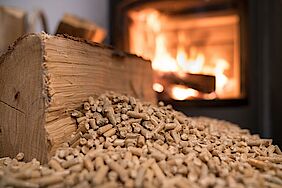Publications
Leading Scientists Warn: Wood Pellets Threat to Climate - “No Silver Pellet”
‘Listen to science’ is the famous battle cry of the Fridays For Future movement. And as COP25 in Madrid has entered its second week, it becomes clearer with every day: Both the stocktaking of climate change and the search for technological solutions to prevent a further increase of the global temperature are becoming more desperate. Now, the European National Academies of Science warn of the serious mismatches between science and policy on forest bioenergy.
We have repeatedly pointed out that in many cases the large-scale substitution of coal by forest biomass will accelerate climate warming, and will increase the risks of overshooting Paris targets. The reason is simple - when the forest is harvested and used for bioenergy, all the carbon in the biomass enters the atmosphere very quickly, but it will not be reabsorbed by new trees for decades. This is not compatible with the need to tackle the climate crisis urgently” says EASAC’s Prof. Michael Norton, EASAC Environment Programme Director.
Despite scientific warning: Biomass rules in EU’s Renewable Directive cause more climate damage than relief
Despite much scientific warning, UN carbon accounting rules turn a blind eye toward the climate impact of cutting trees to burn them. In line with UN rules, the EU’s Renewable Energy Directive revised in 2018 and the EU’s Emissions Trading Scheme (ETS) rate carbon emissions from all biomass use as zero. “This gives a misleading impression to energy consumers and policy makers, and these loopholes must quickly be closed,” adds Michael Norton.
“The concept of the carbon neutrality of forest biomass may have had some validity in 2009 when the urgency of tackling global warming was less widely recognized and the idea was simply that growing biomass removes as much CO2 from the atmosphere as is emitted from its combustion. But the focus today is on limiting global warming to 1.5 or 2C. This requires urgent actions, not waiting for new trees to grow while pumping additional carbon into the atmosphere by burning trees for energy” says Michael Norton.
The large renewable energy subsidies made available in some EU member states have led to a huge increase in forest biomass use - including the replacement of coal in large power stations with imports, for example from the US, Canada and other European countries. The process of harvesting forests to produce wood pellets has been industrialised to a scale of many millions of tons per year and transported over thousands of kilometres.
COP25 - “Like jumping out of the frying pan into the fire”
A critical factor when it comes to using bioenergy is the so-called carbon payback period, which is the time it takes for new trees to reabsorb the carbon that is released during combustion. Far from being carbon neutral, the burning of forest biomass actually adds CO2 to the atmosphere during the carbon payback period, which for the most relevant trees lies between 50 and 100 years. This is important when it comes to assessing how the climate goal of limiting warming to a maximum of 1.5 degrees can be reached. A maximum allowable carbon payback period compatible with the Paris Agreement should be introduced in the sustainability criteria, says EASAC.
As the Madrid conference is proceeding, we see national governments wanting to showcase their success. Misleading carbon accounting rules make it possible to reduce national emissions on paper simply by switching from coal (where emissions have to be reported) to imported biomass (reported as zero emissions). “Forest biomass for energy is being hailed as the proverbial ‘silver bullet’ that delivers a win-win-win for policy makers, foresters and energy companies, because current rules permit it to be indiscriminately subsidized as a renewable energy. But for the climate, it is like jumping out of the frying pan into the fire”, says Dr William Gillett, EASAC’s Energy Programme Director.
Relevant EASAC reports and publications:
Norton, M, Baldi, A, Buda, V, et al. (2019) Serious mismatches continue between science and policy in forest bioenergy. GCB Bioenergy; 11: 1256– 1263. https://doi.org/10.1111/gcbb.12643
EASAC (2019) Forest bioenergy, carbon capture and storage, and carbon dioxide removal: an update. https://easac.eu/publications/details/forest-bioenergy-carbon-capture-and-storage-and-carbon-dioxide-removal-an-update/
EASAC (2018) Commentary on Forest Bioenergy and Carbon Neutrality. https://easac.eu/publications/details/commentary-on-forest-bioenergy-and-carbon-neutrality/
EASAC (2018) Multi-functionality and Sustainability in the European Union's Forests. https://easac.eu/publications/details/multi-functionality-and-sustainability-in-the-european-unions-forests/
Contacts:
Professor Michael Norton
EASAC Environment Programme Director
Email: Michael.Norton@easac.eu
Mobile: +81-90-6620-3230 (Japan: UTC+9)
Dr William Gillett
EASAC Energy Programme Director
Email: William.Gillett@easac.eu
Mobile: +44 7879 635 740
Professor Lars Walloe
Chair of the EASAC Environment Steering Panel
Email: lars.walloe@medisin.uio.no
Mobile: +47 90967531
back to overview





























